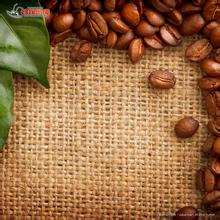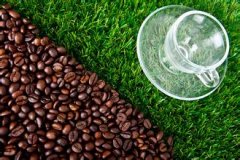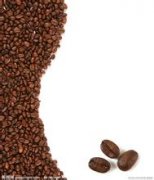A brief introduction to the planting situation of Yega Xuefei Fine Coffee beans with Fruit and Flower fragrance, Geographic location, Climate and altitude

Since 2006, some coffee processing plants in some producing areas have adopted the exquisite elevated shed sun drying method, which invests in high-intensity human labor, which isolates the coffee fruit from contact with the ground and prevents the miscellaneous smell of soil in the process of sunlight. create an unusually clean fruit flavor. After more than two weeks of sun exposure, dark brown coffee fruits are professionally stored, waiting for the whole flavor to ripen. Before sale, the dried cherry pulp and sheepskin are removed, and then the unripe beans and over-fermented beans are removed. Strict control greatly improves the quality of sun-dried beans.
The grading system of Ethiopian coffee is not based on the number of items, but on the proportion of defective beans in raw beans. In October 2009, Ethiopia launched the ECX boutique coffee trading classification system, and Q-Grader rated raw beans as follows:
Washed Yega Chuefei is divided into two grades: Grade 1 and Grade 2.
Grade 1, Grade 3, Grade 4 and Grade 5 are divided into sun Yega Xuefei.
Grade 1 is the highest grade, that is, Yega Xuefei with the lowest defect rate and the best quality.
It is one of the most unique coffee beans in the world today: it has a strong aroma of fruit flowers, lemon and citrus, strong acidity but soft and pleasant. But Yejia Xuefei also has a suntan, hehe, a comparison between the two. Sun-dried beans are more full-bodied than washed Yega beans, which are an excellent material for making iced coffee. And sun beans sometimes even smell black tea. The taste is more like the taste of good Harald, but less of the flavor that Yega Chuefei should have. So I still prefer washed Yejia Sheffield beans.
Yejia Xuefei, nearly 2,000 meters above sea level, is one of the highest coffee producing areas in the world. It has been a wetland since ancient times. "Yirga" means "settle down" and "Cheffe" means "wetland". Lake Turkana, Lake Abaya and Lake Chamo bring abundant water vapor. The rift valley, represented by Misty valley, is foggy all the year round, like spring all the year round, with a gentle breeze, cool and humid, and thousands of coffee trees thrive, giving birth to the unique and unpredictable flavor of Yega Xuefei's unique fragrance of flowers and fruits.
Yega Xuefei's grading system is not based on the number of eyes, but on the proportion of defective beans in the total number of raw beans. Commonly seen are washing G2 and sunbathing G3 Yega Chuefei, G1 is the highest grade, Yega Xuefei, which has the lowest defect rate and the best quality, can be rated as Grade 1 only after hand selection.
Yega Xuefei's coffee trees were planted by monks in Europe and later transferred to farmers or cooperatives. Yega Xuefei is actually constructed by the surrounding coffee communities or cooperatives, including: Hafusha, Hama, Biloya.
Origin: Sumatra, Indonesia, Mantenin (unique flavor): Mantenin from Sumatra is one of the few Arakabi species with large particles, but poor production management and baking will reflect the beans. It was regarded as the best before the Blue Mountains appeared. Characteristics: fragrant-strong, sweet-medium, acid-weak, alcohol-medium, bitter-strong
Charcoal roasted coffee, also known as bitter coffee, means that the fire source of roasted coffee is carbon fire, and sometimes special wood is used as fuel. Coffee beans roasted with carbon fire will have wood flavor instead of carbon burning flavor. This kind of coffee comes from Japan, and the pure re-roasting creates the unique taste of Japanese charcoal roasting. Its aroma is special, sweet, mellow, full-bodied and extremely bitter.
Important Notice :
前街咖啡 FrontStreet Coffee has moved to new addredd:
FrontStreet Coffee Address: 315,Donghua East Road,GuangZhou
Tel:020 38364473
- Prev

A brief introduction to the market price of clean and elegant Yejia Xuefei boutique coffee beans
1. Very shallow baking (LIGHTRoast): the degree of baking; very shallow baking, also known as shallow baking. The lightest roasting degree of all roasting stages, the surface of the coffee beans is a light cinnamon color, its taste and aroma are insufficient, this state is almost undrinkable. It is generally used for testing and seldom for tasting. 2. Shallow baking (CINNAMONRoast): baking degree; shallow baking
- Next

A brief introduction to the treatment method of grinding degree and baking degree of lively and bright Yega Xuefei boutique coffee beans
Yejia Xuefei, nearly 2,000 meters above sea level, is one of the highest coffee producing areas in the world. Here has been a wetland since ancient times, Yirga means to settle down, Cheffe means wetland, Lake Turkana, Lake Abaya, Lake Chamo bring rich water vapor here. The rift valley, represented by Misty valley, is foggy all the year round, like spring all the year round, with a gentle breeze.
Related
- Detailed explanation of Jadeite planting Land in Panamanian Jadeite Manor introduction to the grading system of Jadeite competitive bidding, Red bid, Green bid and Rose Summer
- Story of Coffee planting in Brenka region of Costa Rica Stonehenge Manor anaerobic heavy honey treatment of flavor mouth
- What's on the barrel of Blue Mountain Coffee beans?
- Can American coffee also pull flowers? How to use hot American style to pull out a good-looking pattern?
- Can you make a cold extract with coffee beans? What is the right proportion for cold-extracted coffee formula?
- Indonesian PWN Gold Mandrine Coffee Origin Features Flavor How to Chong? Mandolin coffee is American.
- A brief introduction to the flavor characteristics of Brazilian yellow bourbon coffee beans
- What is the effect of different water quality on the flavor of cold-extracted coffee? What kind of water is best for brewing coffee?
- Why do you think of Rose Summer whenever you mention Panamanian coffee?
- Introduction to the characteristics of authentic blue mountain coffee bean producing areas? What is the CIB Coffee Authority in Jamaica?

